Okinawa
- Sort by
- Popularity
- Name
-
Yomitanzan-hanaori textiles Yomitanzan hanaori
- Woven textiles
- Okinawa

Yomitanzan hanaori is a textile produced in the village of Yomitan, Okinawa. The threads of this craft are first dyed before being woven in a geometric, flowerlike design. This craft is woven with silk or cotton threads dyed with plant-based dyes …
View more
-
Echu traditional Japanese paper Echu washi
- Traditional Japanese paper
- Toyama
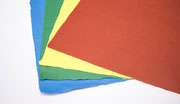
Etchu washi is traditional Japanese paper made in Asahi, Yatsuo, and Taira in Toyama prefecture. Each production area makes their own type of washi which are called Gokayama washi, Yatsuo washi, and Birudan washi. This craft has slight regional va…
View more
-
Kyo wood joinery Kyo sashimono
- Wood, bamboo crafts
- Kyoto

Kyo Sashimono is a kind of wood joinery produced in the prefecture of Kyoto. Sashimono is a collective name for furniture and furnishings assembled with wood joints that originates from the process of measuring with a monosashi or woodwork ruler. …
View more
-
Kyo-komon textiles Kyo komon
- Dyed textiles
- Kyoto
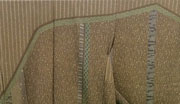
Kyo Komon are fine-patterned textiles produced in Kyoto prefecture. Kyoto, a historical center of dyed textiles, is renowned for its superb fabrics resulting from exceptional dyeing and stencil making. This craft has beautifully elegant colored pa…
View more
-
Kyo Buddhist altar Kyo butsudan
- Household Buddhist altars
- Kyoto

Kyo Buddhist Altars (called Kyo Butsudan in Japanese) are produced in the cities of Kyoto and Kameoka in Kyoto. Most Kyo Buddhist Altars are made for temples instead of households. They are professionally handcrafted by a number of respective expe…
View more
-
Kyo embroidery Kyo nui
- Other textiles
- Kyoto
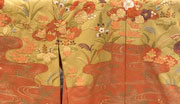
Kyo Embroidery (called Kyo-nui) is produced in Kyoto, Kyoto prefecture. This graceful craft reflects the elegance of Kyoto's culture and requires meticulous skill. Artisans of this craft pursue absolute perfection and freely use costly silk, …
View more
-
Hachio island silk Honba kihachijo
- Woven textiles
- Tokyo

Honba Island Silk (called Honba Kihachijo in Japanese) is produced on Hachijojima Island in Tokyo. The name of this craft derives from a silk fabric with stripe and check patterns mainly dyed in bright yellow called kihachi. Patterns mainly dyed i…
View more
-
Kyo art preservation Kyo hyogu
- Other crafts
- Kyoto
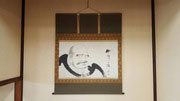
Kyoto Art Mountings, called Kyo Hyogu in Japanese,are mountings done in Kyoto prefecture. Hyogu or hyoso is a traditional technique to strengthen and preserve calligraphy works, paintings and the like with paper or cloth and adding decorations to …
View more
-
Ryukyu traditional textiles Ryukyu bingata
- Dyed textiles
- Okinawa

Ryukyu Bingata is a dyed and woven textile produced around Shuri, Okinawa prefecture. Its origin goes back to the 14th to 15th century. The ladies of the royal family or the families of the warrior class wore Ryukyu Bingata. There are two kinds of…
View more
-
Kyo Buddhist altar equipment Kyo butsugu
- Household Buddhist altars
- Kyoto
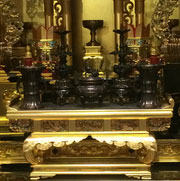
Kyo Butsugu are Buddhist altars and altar fittings made in Kyoto. Studded with temples of various sects, Kyoto has always prospered as the center of Buddhism, inevitably leading to increasing demand for altar fittings for memorial services. 80% of…
View more
-
Woodblock prints Edo mokuhanga
- Other crafts
- Tokyo

Techniques for woodblock prints were developed and refined during the Edo period (1603-1868), and Edo Woodblock Prints called Edo Mokuhanga in Japanese, contributed to spreading beautiful printed art forms such as ukiyoe (a genre of Japanese art).…
View more
-
Kijoka banana fiber cloth Kijoka no bashofu
- Woven textiles
- Okinawa

Kijoka no Bashofu are a woven cloth produced in Kijoka, Ogimi Village in northern Okinawa. Bashofu is made from the fibers of the Japanese banana plant called Basho, and has been used to make kimonos in Okinawa since ancient times. Kijoka no Basho…
View more
-
Tokyo textiles Tokyo tegaki yuzen
- Dyed textiles
- Tokyo

Tokyo Tegaki Yuzen are kimono textiles produced in Shinjuku Ward, Nerima Ward and Nakano Ward, Tokyo. Having been produced in the townsmen culture of Edo (current Tokyo), a refined stylishness is expressed in its soft, subdued colors. Unlike other…
View more
-
Kyo dyed textiles Kyo kanoko shibori
- Dyed textiles
- Kyoto

Kyo Kanoko Shibori is a dyed textile produced in Kyoto Prefecture. Shibori is one of the tie-dye techniques that create patterns by tying the textile before dyeing so that the tied parts remain white. This particular Shibori resembles fawn spots a…
View more
-
Kyo-ishi craft Kyo ishi kogeihin
- Stonework
- Kyoto

Kyo-ishi Craft called Kyo-ishi Kougeihin in Japanese, are stonework and gem carvings produced in and around the cities of Kyoto and Uji, in the Kyoto prefecture. Abounding in quality granite from the village of Kitashirakawa at the foot of Mt. Hi…
View more
-
Shogawa woodcraft Shogawa hikimono kiji
- Industrial art materials and tools
- Toyama
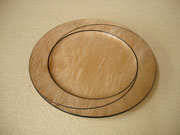
Shogawa woodcrafts are mostly woodcraft articles such as bowls or trays made in a wide area of the Toyama Prefecture including the city of Takaoka and the city of Tonami. Shogawa woodcrafts were designated as a traditional craft by the Ministry of…
View more
-
Yonaguni brocade Yonaguni ori
- Woven textiles
- Okinawa
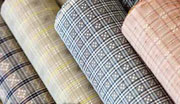
Yonaguni Brocade, called Yonaguni Ori in Japanese, is a textile produced in Yonaguni-cho, Yaeyama Gun, Okinawa Prefecture. The characteristic of Yonaguni Ori is the simple beauty of the textile that is dyed and woven by hand in the distinctive cli…
View more
-
Edo-sekku doll Edo sekku ningyo
- Dolls, kokeshi
- Tokyo
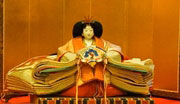
Edo Sekku Ningyo are dolls produced in 12 of the wards in Tokyo and four cities in Saitama Prefecture. They are costumed dolls, such as ichimatsu ningyo (play dolls), gosho ningyo (palace dolls) and fuzoku ningyo (dolls in period costumes), as wel…
View more
-
Kyo kimono-dyeing Kyo kuromontsuki zome
- Dyed textiles
- Kyoto

Kyo Kuromontsuki Zome is a dyed fabric produced in the areas including Kyoto city and Kameoka city in Kyoto prefecture. The characteristic of Kyo Kuromontsuki Zome is its high quality and graceful black color. The kimonos that are worn for funeral…
View more
-
Yuntanza minsa Yomitanzan minsa
- Woven textiles
- Okinawa

Yuntanza Minsa is a textile produced in the region around Yomitanson, Nakagami-gun, Okinawa prefecture. Min means "cotton" and sa means "narrow belt". Narrow belts were made in various regions in Okinawa from ancient times. Bas…
View more
-
Edo Hyogu (Art Mountings) Edo Hyogu
- Other crafts
- Tokyo

Hyougu (art mountings) are used to set up calligraphic works and paintings into hanging scrolls, picture frames, and folding screens etc. for display and preservation. There are various types of art mountings such as hanging scrolls and scrolls, f…
View more
-
Edo Oshi-e Pictures on Embossed Fabric Edo oshie
- Dolls, kokeshi
- Tokyo

Edo Oshi-e, or Edo Oshi-e Embossed Fabric Pictures, are a traditional craft produced around Nihombashi and Asakusa, Tokyo from the late Edo period (1603 - 1867). Today, they are also produced in Sumida ward, Koto ward, Katsushika ward in Tokyo, as…
View more
-
Edo tortoise shell crafts Edo bekko
- Other crafts
- Tokyo
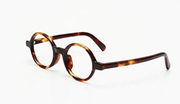
Edo Bekko are fashion accessories and ornaments made from hawksbill turtle shells, produced in Bunkyo Ward, Taito Ward and Sumida Ward, Tokyo. Production of this craft started in the early Edo period. Edo Bekko is characterized by its unique sheen…
View more
-
Etchu Fukuoka Sedge Hats Etchu Fukuoka no suge gasa
- Other crafts
- Toyama
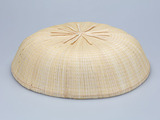
Etchu Fukuoka no suge gasa, Etchu Fukuoka Sedge Hats, are a traditional craft produced in Takaoka, Tonami, Oyabe, and Nanto of Toyama prefecture. The sedges produced in Fukuoka, Toyama are top quality as they survive the severe winters of the Hok…
View more
-
Flower pattern textiles Haebaru hanaori
- Woven textiles
- Okinawa

Haebaru flower patterned textiles called Haebaru Hanaori in Japanese, are made in the city of Haebaru in the Okinawa Prefecture. Plants harvested in the prefecture such as garcinia or Assam indigo are used to dye the yarns. Haebaru Hanaori can be …
View more
-
Sanshin Sanshin
- Other crafts
- Okinawa

Sanshin is a musical instrument produced around Naha of Okinawa prefecture. It is used for Kumiodori, which is a theatrical art listed on the UNESCO's Representative List of the Intangible Cultural Heritage of Humanity, Ryukyu opera, Okinawa&…
View more
-
Tokyo Honzome Chusen Tokyo Honzome Chusen
- Dyed textiles
- Tokyo

Chusen is a dyeing technique to pour dye onto the fabric. By pouring dye onto layers of fabric from the top and bottom, both sides of the fabric are dyed beautifully so that there is no difference between the back side and front side. Fabrics dyed…
View more
-
Tokyo Koto (Japanese Harp) Tokyo Koto
- Other crafts
- Tokyo
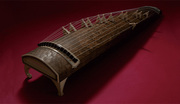
The koto was introduced from China as an instrument for court music. Then around the 16th century, the Tsukushi Goto was made in Japan which became the base of the Japanese koto today. The koto was known familiarly as part of the Kyoto culture, b…
View more
-
Tokyo Plain Dyeing Tokyo mujizome
- Dyed textiles
- Tokyo
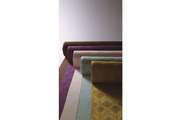
Tokyo Plain Dyeing, called Tokyo Mujizome in Japanese, is a plain dyed textile that started in the mid-Edo period by dyeing artisans as plain dyeing of Edo Murasaki(Edo Purple), indigo, safflower and Edo Cha(Edo Brown). The current main productio…
View more
-
Tokyo Shamisen Tokyo Shamisen
- Other crafts
- Tokyo

The Tokyo Shamisen is made from the beginning to the end by one artisan. In the Kansai area, the work is divided among a number of artisans, but the Tokyo Shamisen is custom made for the musician by one artisan. It is a craft made by the artisan a…
View more

































































































































































































































































































